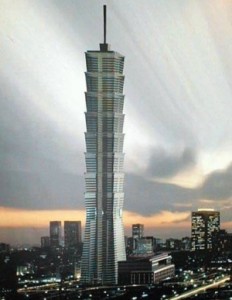Civil Engineering Landmark # 1: Tehachapi Loop
In 1964 the American Society of Civil Engineers began compiling a list of the ilst of Historic Civil Engineering Landmarks as designated by the American Society of Civil Engineers since it began the program in 1964. The designation is granted to projects, structures, and sites in the United States (National Historic Civil Engineering Landmarks) and the rest of the world (International Historic Civil Engineering Landmarks). As of 2012, there are 256 landmarks included on the list. Sections or chapters of the American Society of Civil Engineers may also designate state or local landmarks within their areas; those landmarks are not listed here.
Considered an outstanding engineering feat during its time, the Tehachapi Pass was built in 1876. The American Society of Civil Engineers named it a National Civil Engineering Historic Landmark in 1988 and it is considered one of the railroad wonders of the world. It is one of the busiest single track sections of railroad in the world and it provides a vital east-west rail link to and from the San Joaquin Valley. It was built by 3,000 Chinese workers who dug tunnels and constructed bridges that allowed trains to cross the Tehachapi Mountains. Many of them were killed during the dangerous work as they used shovels, picks and dynamite. The granite rock of the mountains was then hauled away in horse-drawn carts.
Construction
Built from 1874 to 1876, The Tehachapi Loop was built to connect California’s fertile San Joaquin Valley with the then small agricultural town of Los Angeles on California’s southern coast. Originally, the plans mapped out indicated that the Tehachapi Line would bypass Los Angeles and instead go southeast through the Mojave Desert to Yuma, Arizona, and all points east. Eventually state politics overruled the Southern Pacific’s decision, which was the company that monopolized railroad transportation in California at that time.
It was built for the purpose of gaining elevation at a manageable gradient. The Tehachapi Railroad follows the steep Tehachapi Creek, averaging a 2.2 percent grade over 28 miles. The engineers had a difficult time getting the railroad over the steep Tehachapi Mountains which form the southern end of the Sierra Nevada Mountain Range. They finally chose a route across Tehachapi Pass which is the lowest pass across the Sierras and remains nearly snow-free in the winter. The railroad line makes a series of twists, curves, and turns that includes passes through six tunnels. It finally gains an additional 90 feet of elevation as it dramatically spirals over itself at the Tehachapi Loop.
Regarded by many as an engineering genius, the Tehachapi Railroad Line was the work of the gifted civil engineer, William Hood. It is rumored that he was inspired to build a loop after watching a boy and his donkey climb a path of least resistance up a hill. After surveying a downhill right of way, Hood plotted a unique loop. His spiral went on to become an industry standard.
He constructed a loop which would pass over itself as a means of gaining elevation and keep the grades at around 2%. At the time there was no heavy machinery available except dynamite. They used cut-and-fill methods to keep the grade at no greater than 2.2%, which featured a short tunnel and overpass. Gaining an impressive 77 feet in height, it ultimately covered about three-quarters of a mile. Completed in less than two years, the railroad was an amazing feat considering the complexity of the project. It has continued to work well even in present day and is in regular use. As railfanning picked up in the mid-20th century, people visited the site to watch the trains cross over themselves with stunning scenery featuring at the background.
Current Day
The Tehachapi Railroad Line is in constant use today and is one of the busiest single-track railroads in North America. At the time of its construction, people could not have imagined that the length of trains would reach where they are today. People converge to see the unique phenomenon of watching train freights crossing over themselves on the loop. An average of 36 railroad trains crosses over its tracks every day. Trains using the tracks must pull over to sidings several times on the journey to avoid oncoming trains.
A rail improvement project is currently under consideration to increase freight train traffic through the Tehachapi Pass by about 80 percent by 2020. The Tehachapi Loop is not expected to change but additional track would allow more train traffic to move through the area. Rail service in the region is currently experiencing issues with congestion and a growing volume of rail traffic. The volume of goods passing through have greatly increased over the past few years. The project will improve operational capacity, increase efficiencies, and reduce operational constraints that limit efficiencies of rail freight movement across the Tehachapi Mountains.



